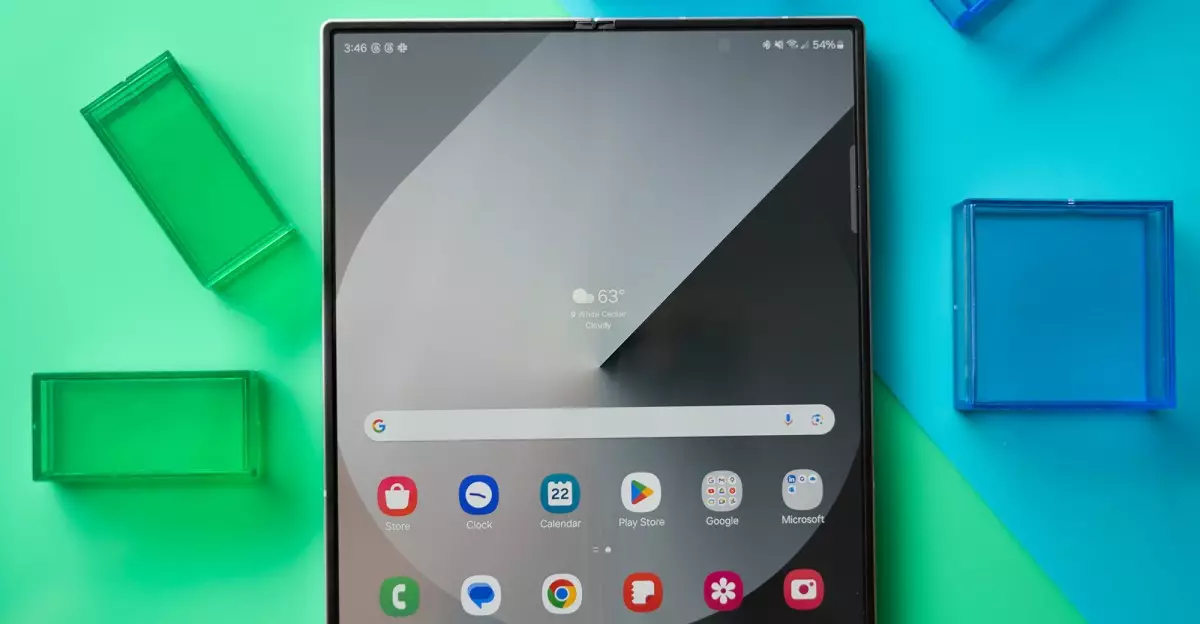Despite the increasing intrigue surrounding foldable smartphones, actual consumer commitment remains surprisingly tepid. People are curious about these innovative devices—anecdotal evidence from casual conversations and observed interactions at public spaces regularly reveal interest, yet sales figures tell a different story. The disconnect raises fundamental questions: Why isn’t fascination translating into widespread adoption? Samsung, the pioneer and dominant force in the foldable arena, clearly recognizes this gap. The company’s upcoming announcements suggest a strategic shift aimed at bridging the divide between curiosity and ownership. However, it’s imperative to ask whether lofty branding efforts, such as adding an Ultra line, will genuinely appeal to mainstream audiences or merely serve as marketing gloss.
Persistent Challenges Hampering Foldable Markets
For years, Samsung has invested heavily in marketing foldable smartphones, but the commercial payoff has been modest at best. The reason lies in the inherent drawbacks of foldable technology: fragile hinges, susceptibility to dust, hefty prices, and durability concerns. While foldables may be innovative, they aren’t yet reliably reinforced for everyday use. Despite Samsung’s claim of pursuit toward dustproofing, comprehensive IP68 ratings—a standard measure of durability—remain elusive. Consumers who consider investing hundreds of dollars in a premium device are naturally cautious, especially given the higher repair costs associated with foldables. The industry’s struggle to develop a truly durable, cost-effective foldable that matches or surpasses the reliability of traditional flagships curtails broader consumer acceptance.
Strategic Innovations: Turning the Tide with New Models
Samsung appears poised to shake things up this year, aiming to address longstanding objections with a suite of new devices. The rumored Ultra foldable, with a slimmer profile rivaling competitors like Oppo and Honor, signals a move toward making foldables less bulky and more pocket-friendly. Additionally, anticipated enhancements such as a larger, Razr-style cover screen on the Z Flip 7 could dramatically improve usability, especially for quick interactions. Offering a more competitive price point through a ‘Fan Edition’ variant may also help entice hesitant buyers—those who are wary of investing in what still feels like an experiment. Such diversification could better cater to different user segments, spreading risk and expanding the foldable market’s reach.
The Price and Durability Dilemma
Bringing foldables into the mainstream hinges on solving two core issues: cost and durability. At present, high prices serve as a significant barrier, compounded by concerns over fragility. Samsung’s attempts to innovate with thinner profiles and larger screens are promising but insufficient if the devices cannot withstand daily wear and tear. The reality remains that foldables are more prone to damage from dust and accidental drops. Repair costs, often exorbitant, further dissuade consumers from fully embracing the technology. Until manufacturers can deliver devices that genuinely balance elegance with robustness—perhaps through stronger materials or better sealing—the foldable market will continue to struggle with its reputation as a niche product.
The Promise of a Future Apple Foldable
Amid these hurdles, a beacon of hope shines in recent rumors of an upcoming Apple foldable device, anticipated around 2026. Apple’s entry into the foldable space could wield a transformative impact, significantly broadening consumer interest in the U.S. market and beyond. Apple’s reputation for quality and innovation could elevate perceptions of foldables from bleeding-edge gimmicks to mainstream essentials. The introduction of a credible competitor might also compel Samsung to accelerate its innovations, possibly leading to faster iterations of durability, affordability, and user experience. The interplay between these tech giants could result in a more competitive environment, ultimately benefiting consumers eager for reliable, stylish, and versatile devices.
The Road Ahead: More Than Just a Name Change
While Samsung’s strategy to flaunt high-end Ultra models and larger screens appears promising, it arguably reflects a reaction to market demands rather than a breakthrough. Elevating the foldable experience requires more than branding or aesthetic tweaks; it necessitates solving core technical challenges. The coming months will reveal whether these incremental upgrades translate into meaningful adoption or merely add to the industry’s growing list of promising but underwhelming devices. Ultimately, true market transformation depends on delivering not just innovation in form, but in function—a reliable, durable, and affordable foldable that becomes an everyday device rather than a niche novelty.
—
Note: This article critiques the overall landscape of foldable smartphones, highlighting the tensions between technological aspiration and practical limitations while offering insights on how Samsung and potentially Apple could reshape the space with strategic innovation.

